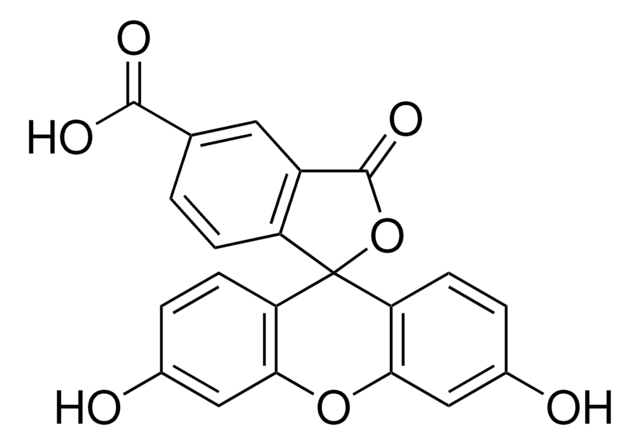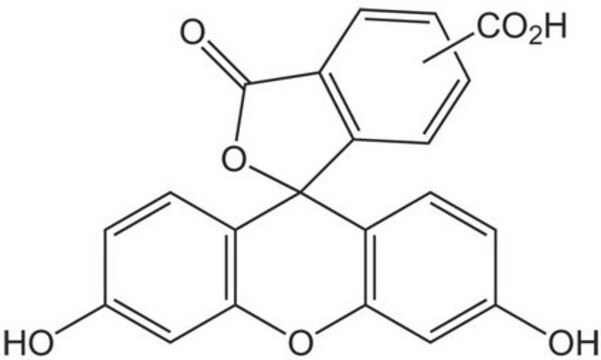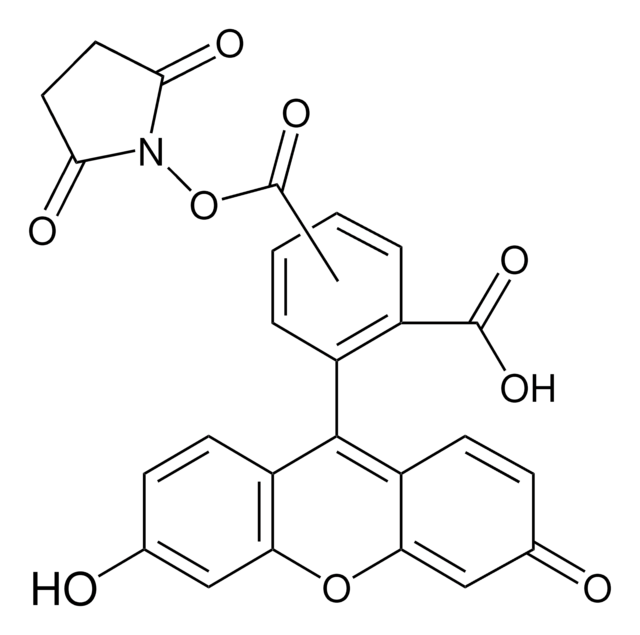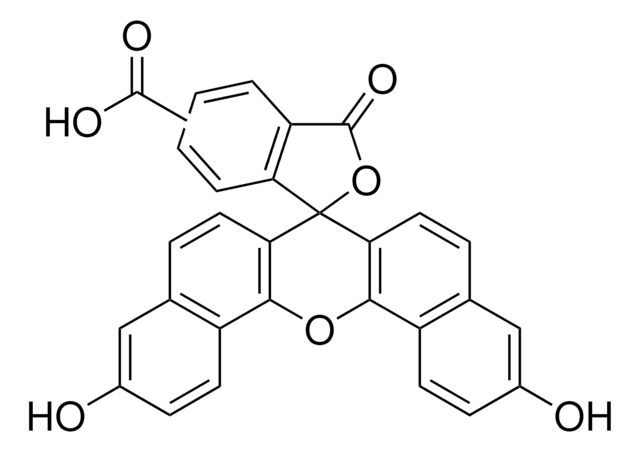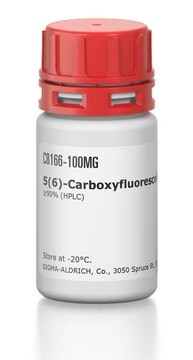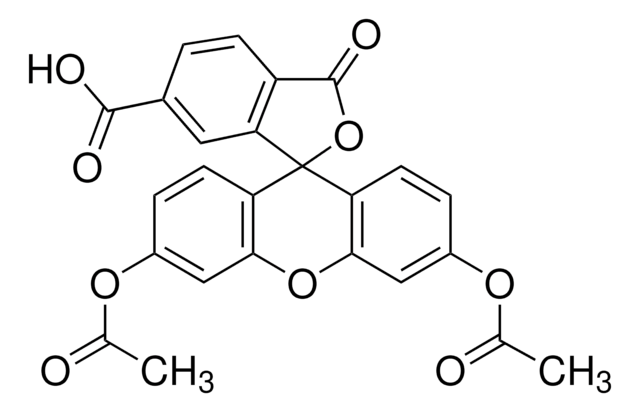21877
5(6)-Carboxyfluorescein
suitable for fluorescence, BioReagent, ≥95% (HPLC)
Sinonimo/i:
5(6)-FAM, 5,6-CF
About This Item
Prodotti consigliati
Nome Commerciale
BioReagent
Livello qualitativo
Saggio
≥95% (HPLC)
Forma fisica
powder
Punto di fusione
275 °C (dec.) (lit.)
Fluorescenza
λex 492 nm; λem 517 nm in 0.1 M Tris pH 8.0
Compatibilità
suitable for fluorescence
Stringa SMILE
OC(=O)c1ccc2c(c1)C(=O)OC23c4ccc(O)cc4Oc5cc(O)ccc35.OC(=O)c6ccc7C(=O)OC8(c9ccc(O)cc9Oc%10cc(O)ccc8%10)c7c6
InChI
1S/2C21H12O7/c22-11-2-5-15-17(8-11)27-18-9-12(23)3-6-16(18)21(15)14-4-1-10(19(24)25)7-13(14)20(26)28-21;22-11-2-5-14-17(8-11)27-18-9-12(23)3-6-15(18)21(14)16-7-10(19(24)25)1-4-13(16)20(26)28-21/h2*1-9,22-23H,(H,24,25)
BPVHBBXCESDRKW-UHFFFAOYSA-N
Cerchi prodotti simili? Visita Guida al confronto tra prodotti
Descrizione generale
- It has 2 wavelengths for maximum absorbance (465 and 490nm).
- And its fluorescence emission, at 515nm(max.), increases as a function of pH in the physiological range of 6-7.4.
Applicazioni
Altre note
Codice della classe di stoccaggio
11 - Combustible Solids
Classe di pericolosità dell'acqua (WGK)
WGK 3
Punto d’infiammabilità (°F)
Not applicable
Punto d’infiammabilità (°C)
Not applicable
Dispositivi di protezione individuale
Eyeshields, Gloves, type N95 (US)
Certificati d'analisi (COA)
Cerca il Certificati d'analisi (COA) digitando il numero di lotto/batch corrispondente. I numeri di lotto o di batch sono stampati sull'etichetta dei prodotti dopo la parola ‘Lotto’ o ‘Batch’.
Possiedi già questo prodotto?
I documenti relativi ai prodotti acquistati recentemente sono disponibili nell’Archivio dei documenti.
I clienti hanno visto anche
Articoli
Nitric oxide (NO) as a signal transporter in neurons, endothelial cells and in the immune system.
Il team dei nostri ricercatori vanta grande esperienza in tutte le aree della ricerca quali Life Science, scienza dei materiali, sintesi chimica, cromatografia, discipline analitiche, ecc..
Contatta l'Assistenza Tecnica.
